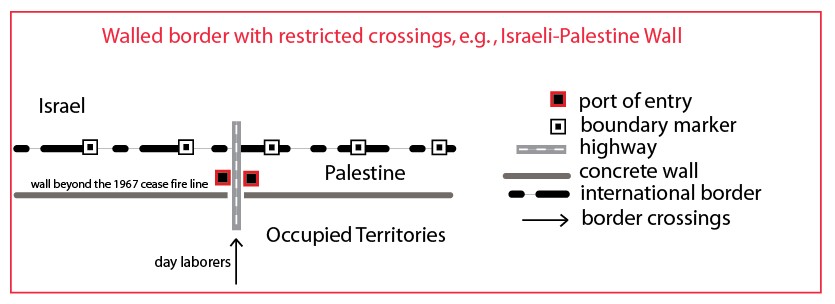Ingolf Vogeler, Types of
International Borders
along the U.S.-Mexico Border
Security lands uses exceed 50 percent along the border with Lebanon, Negev peninsula, Jordan, Golan Heights, Gaza Strip, and Egypt; in the rest of Israel, the percent declines to 10 percent. All governments, of course, justify their exclusionary border actions, whether for security reasons, to control illegal immigration, illegal activities, and/or terrorism, but the results are the same for the people on the ground who seek to move for legitimate personal economic, political, or religious reasons, if no always legally defined by the countries to which they want to move. Landscape of security, however well intended by governments, are also landscapes of exclusion –- preventing people from moving freely from one country to another and/or separating members of the same ethnic groups between countries.

